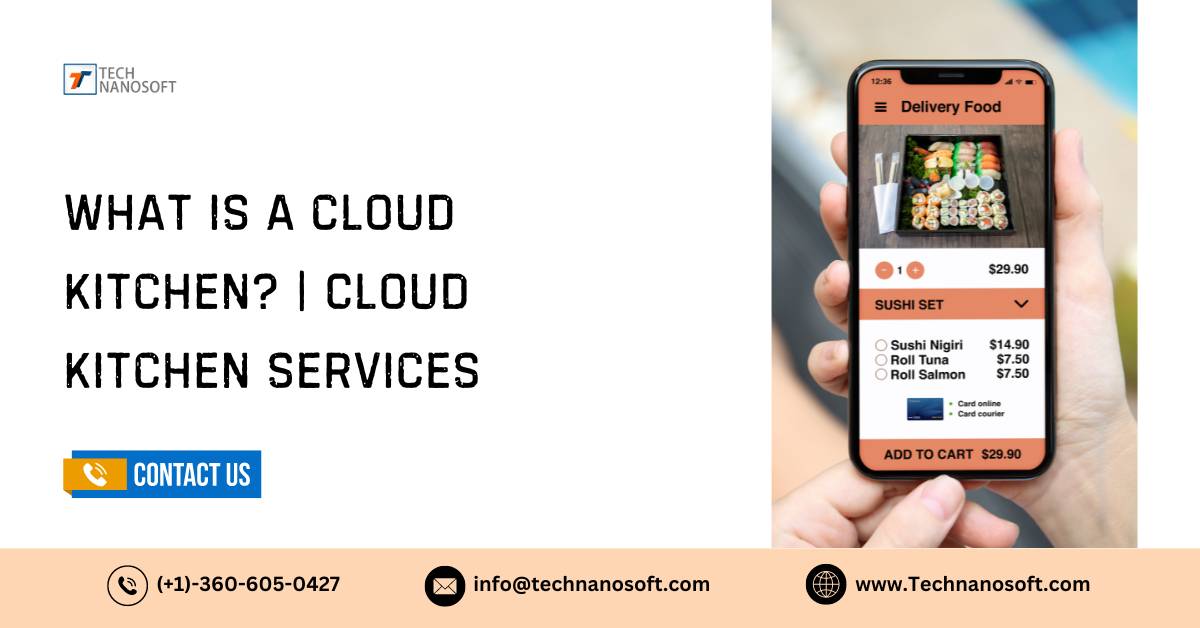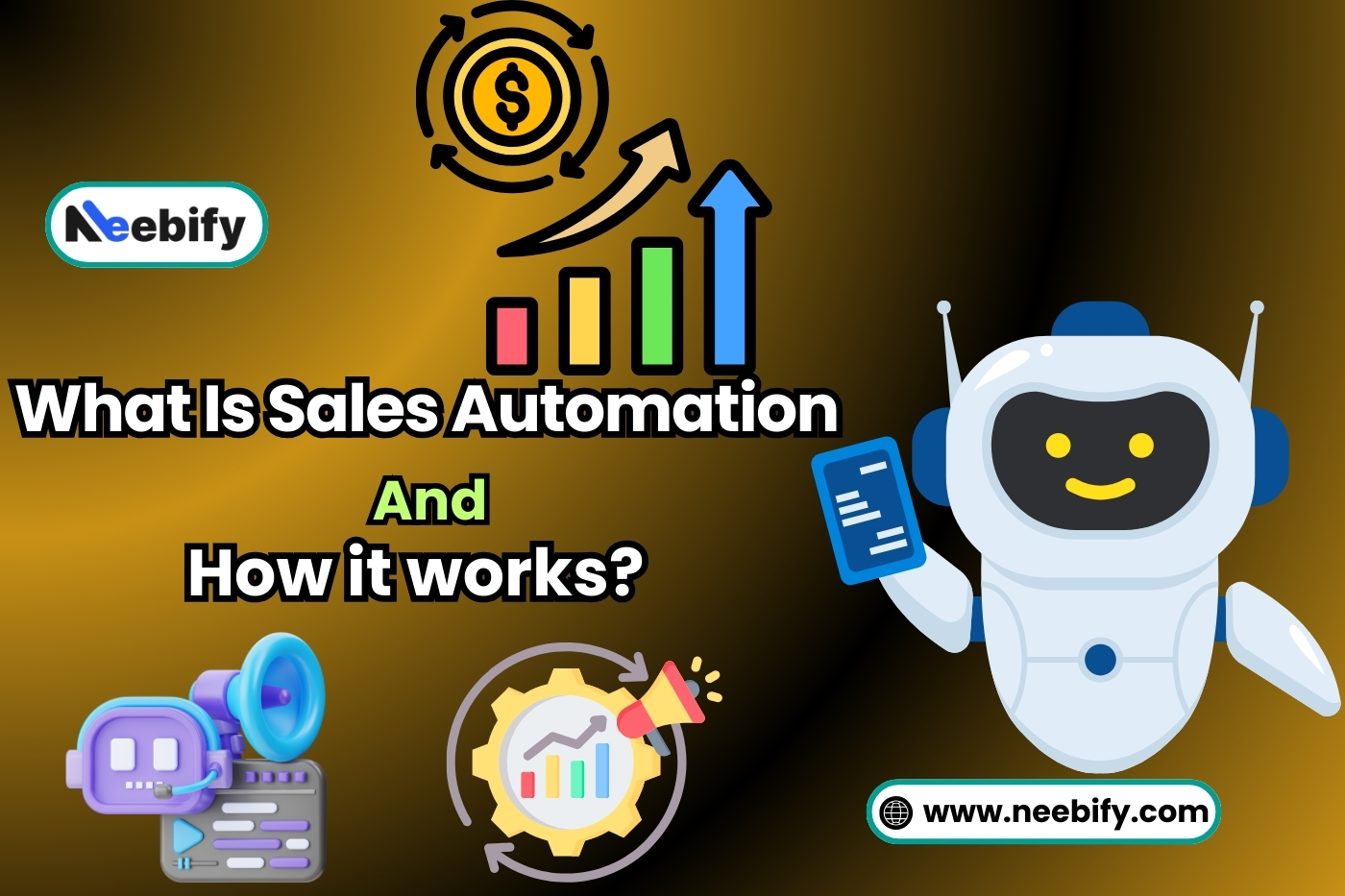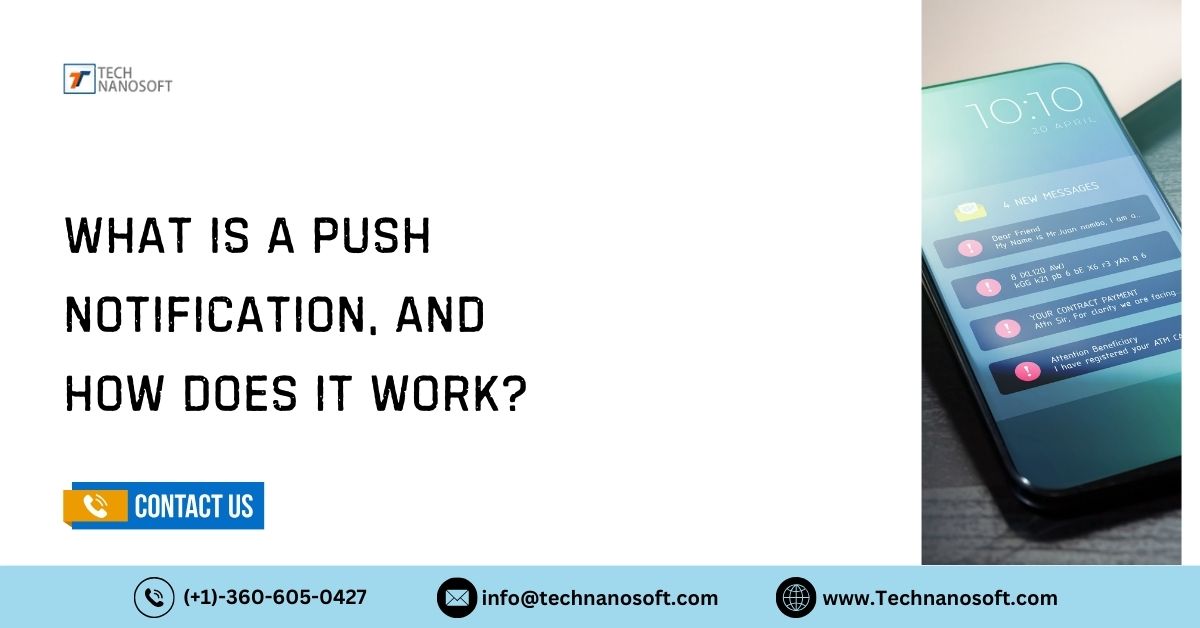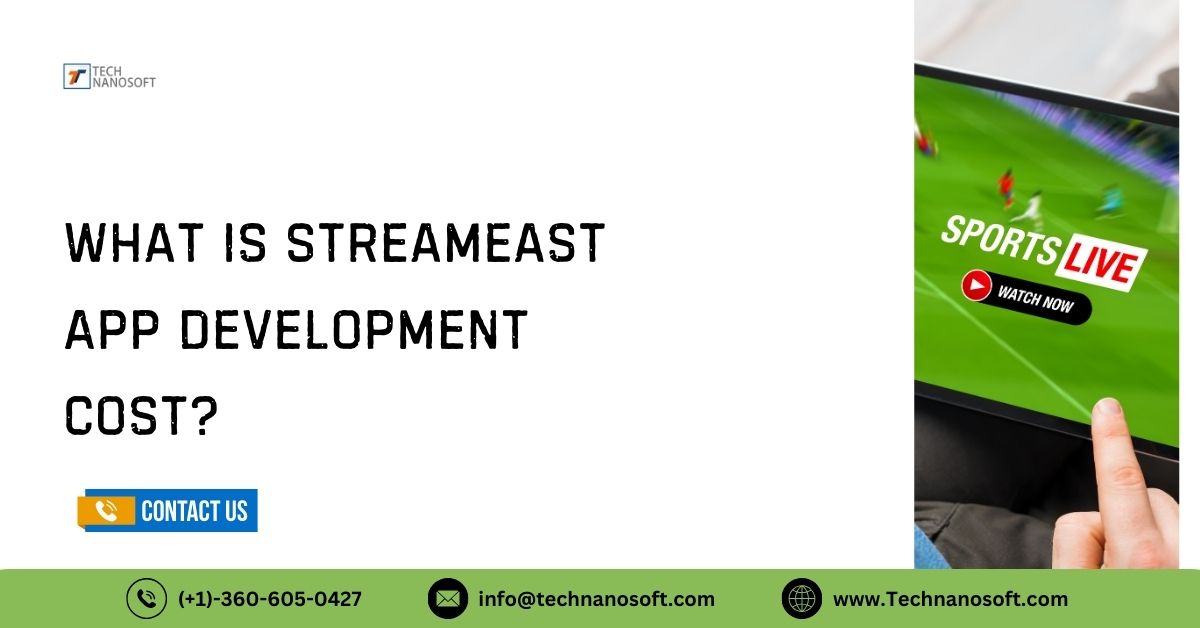What is a cloud kitchen? | Cloud kitchen services

The food scene has changed a lot since cloud kitchens came along. These innovative businesses, sometimes called "ghost kitchens" or "virtual kitchens," are at the head of a culinary revolution that is changing the way people eat. They've changed the traditional idea of eating out by putting a lot of stress on online delivery and takeout services.
Cloud kitchens have quickly become popular thanks to their efficiency, low costs, and unparalleled ease of use. They have caught the attention of both savvy consumers and forward-thinking business owners, solidifying their position as essential players in the modern food industry.
What is a Cloud Kitchen?
A cloud kitchen, also known as a ghost kitchen or virtual kitchen, is a novel concept in cooking that is revolutionizing the food industry. Cloud kitchens are different from regular restaurants because they only bring and take away food. These businesses focus on making meals for people who order them online, using technology and simplified processes to get the job done quickly and easily.
Cloud kitchens are a cheap way for food producers to start and grow their businesses because they don't need expensive storefronts. As the need for easy food delivery services grows, they take advantage of it and change the way people eat in the digital age.
Point of Sale (POS) for Cloud Kitchen
The set of software and hardware known as a POS (point of sale) system handles order taking, stock tracking, and transaction handling. Unlike the more general POS systems found in restaurants with physical locations, cloud kitchens specifically design their POS systems to meet the needs of delivery-only businesses.
These systems often incorporate online ordering platforms and delivery management software to efficiently handle new orders, monitor inventory levels in real time, and enhance the efficiency of kitchen operations. In cloud kitchens, POS systems assist operators in managing numerous orders, ensuring accurate filling, and providing a seamless ordering experience for customers, all while enhancing efficiency and reducing errors.
Important Parts of The Delivery Process for Cloud Kitchens
Integration with Delivery Services
Integration with well-known food delivery services like DoorDash, Uber Eats, and Grubhub is a key part of cloud kitchens. This integration makes it easier for restaurants to take orders by letting them handle sales from multiple platforms on a single screen.
No more needing to log in to each delivery app separately; now, orders go straight to the cloud kitchen platform thanks to smooth integration, which makes things easier and more efficient. Working together, cloud kitchens and delivery services make deals easier, process orders faster, and, in the end, make customers happier.
Order Management
Order management that works well is the key to running a good cloud kitchen. The delivery service and the cloud kitchen platform work perfectly together when a customer makes an order through a delivery service. Here, kitchen staff can see full details about orders, speed up the process of making food, and mark orders as "ready for pick-up" in the app.
Managing orders from one place makes sure they are correct, speeds up the processing time, and improves total operational efficiency. By making order management processes more efficient, cloud kitchens can meet customer needs, keep quality standards high, and grow their businesses in a market that is becoming more and more competitive.
Delivery Driver Notifications
It is extremely important for the platform and delivery drivers to be able to communicate on time in the constantly changing world of cloud kitchens. The cloud kitchen platform instantly notifies drivers partnered with delivery services through their apps when an order is ready and marked as "ready for pick-up," The driver closest to the customer quickly picks up the order thanks to this real-time notification method.
By making it easy for kitchen staff and delivery drivers to talk to each other and work together, cloud kitchens improve overall customer happiness, cut down on wait times, and make delivery logistics more efficient. Streamlined driver alerts play a crucial role in ensuring prompt and accurate order fulfillment, thereby elevating the customer experience.
Delivery Tracking
In this age of on-demand dining, cloud kitchens that want to improve customer happiness and transparency must include delivery tracking features. Certain platforms enable customers to monitor their orders in real-time, tracking their progress from preparation to delivery. Easy-to-use interfaces enable customers to track the driver's location, predict their expected arrival time, and receive updates upon delivery completion.
Customers can trust this level of openness because it reduces their doubts and builds trust in the delivery process. By using tracking technologies for deliveries, cloud kitchens not only make the customer experience better overall, but they also set themselves apart in a crowded market, which encourages customers to stick with them and buy from them again.
Key Features of a POS System in a Cloud Kitchen
|
Order Management, Menu Management, Integration Capabilities, Inventory Management, Reporting and Analytics, Customer Relationship Management (CRM), Multi-location Support, Payment Processing, Kitchen Display System (KDS) Integration, Scalability and Flexibility |
|---|
How to Start a Cloud Kitchen
To open a cloud kitchen, you need to carefully plan and carry out your strategy. If you want to stand out in the food business, you should start by figuring out your niche cuisine and target market. Look for a good site with easy access to a large number of people and low operating costs to make sure that everything runs as smoothly as possible.
Invest in a strong IT infrastructure to make managing orders and delivering packages easy. To reach more people, connect your business to famous delivery platforms. Focus on using high-quality products and providing excellent customer service to build a loyal customer base and spread good word of mouth.
To keep food quality and compliance standards high, strict cleanliness and safety rules should be put in place. To stay ahead in the rapidly changing digital food landscape, you need to be open to new ideas and able to adapt to new market needs. You should also keep improving your products and services to meet changing customer tastes and market needs.
The User Side and The Restaurant Side Management
User Side Management
User-side management in cloud kitchens encompasses a range of tools and platforms aimed at enhancing the customer's experience. It has easy-to-use ordering systems, smooth payment handling, and clear ways to keep track of orders. The end user finds everything easy and satisfying, from browsing menus to placing orders and monitoring delivery statuses. Cloud kitchens want to make the whole buying process easier by focusing on design that is easy to use and functionality that works well.
The smooth experience not only keeps customers coming back, but it also leads to good reviews and word-of-mouth tips, which help the business grow. In the end, good user-side management is key to making an easy experience that keeps customers coming back for more, which strengthens the cloud kitchen's place in the food delivery market.
Restaurant Side Management
In the opposite direction is restaurant-side management, which focuses on the day-to-day tasks of running a cloud kitchen smoothly. This includes taking orders, keeping track of supplies, improving the flow of work in the kitchen, and coordinating the staff. As soon as an order comes in through an integrated delivery app, management on the restaurant side makes sure everything runs smoothly, from making the food to packing it up and delivering it.
Cloud kitchens use technology to automate jobs, keep track of inventory levels, and look at performance metrics, which makes sure that everything runs smoothly. By using strong restaurant-side management strategies, cloud kitchens can quickly fill orders, keep quality standards high, and eventually make customers happy and loyal. In the fast-paced food delivery business, this effective management style is key to staying ahead of the competition and enjoying long-term success.
Who Uses Cloud Kitchens?
Delivery-Optimized Restaurants
Delivery-focused restaurants are one of the main types of users of cloud kitchens. They use this new technology to focus only on making food and delivering it. Because they don't need a standard dine-in area, these businesses can better use their resources, make operations run more smoothly, and deliver to more places.
Restaurants designed for delivery can meet the growing demand for easy, on-demand dining experiences with the help of cloud kitchens. This makes customers happier and helps the business grow in the competitive food delivery market.
Caterers
Caterers are another important group that benefits from cloud kitchens. These chefs use cloud kitchens to make a lot of food for events, parties, and get-togethers without having to worry about fitting everything into a restaurant. Caterers can adjust their operations to meet demand, improve production processes, and keep their menu options flexible by using cloud kitchen technology. This lets them provide high-quality catering services quickly, meeting a wide range of clients' wants while also making the most money and running their business as efficiently as possible.
Meal Prep Companies
More and more meal prep businesses are using cloud kitchens to make their operations run more smoothly and keep up with the demand for quick and healthy food options. These businesses excel at creating pre-portioned meals tailored to specific dietary requirements and health objectives.
Meal prep companies can easily batch-cook meals, improve inventory management, and make sure that the quality of all of their products is the same by using cloud kitchens. For meal prep businesses to grow, gain more customers, and take advantage of the growing popularity of food delivery services, cloud kitchens give them the infrastructure and flexibility they need.
Packaged Food Producers
Cloud kitchens help companies that make packaged foods speed up the production process and get their goods to market more quickly. These businesses make packed foods like sauces, condiments, snacks, and meals that are ready to eat.
Product companies that package food can use cloud kitchens to try out new recipes, make small batches of food, and fill orders for delivery without having to pay the high costs of running a traditional factory. Cloud kitchens are a cheap way for companies that package food to try new things, make changes, and expand their businesses, which leads to new products and bigger markets.
Tests of Food Products
Cloud kitchens are great places to test and create new food products because they give chefs, food scientists, and entrepreneurs a safe place to try out new recipes and ideas. Cloud kitchens have all the infrastructure and tools needed for thorough testing and iteration, whether the goal is to see if a new menu item will work or to improve the taste of a packaged food product.
Food product testers can get useful feedback, make changes to recipes, and improve their products before putting them on the market by using cloud cooking facilities. In the end, this makes sure that new foods meet consumer expectations for taste, quality, and new ideas, which is what makes the food business so competitive.
Benefits of a Cloud Kitchen
Affordable Startup Cost
Start-up costs for a cloud kitchen are much lower than those for standard restaurants with physical locations. By not having to build a physical dining area, business owners can put their money and time into things like kitchen tools, ingredients, and marketing.
This feature of affordability opens up the world of cooking to more people, making it easier for aspiring chefs and food lovers to get into the business. A cloud kitchen's lower starting costs enable more individuals to launch their own food businesses or experiment with new culinary techniques. This encourages innovation and diversity in the food industry.
Lower Overhead
A cloud kitchen has much lower operating costs than a traditional restaurant. This is mostly because there are no costs involved with maintaining a physical dining area. The absence of expensive real estate, extensive indoor decor, and front-of-house staff reduces overhead costs.
This means that profit margins are higher. This lean operational model lets cloud kitchen owners carefully use their resources, putting an emphasis on good ingredients, running the kitchen efficiently, and marketing to the right people.
By keeping overhead costs low, cloud kitchens can offer competitive prices to customers while still making a profit. This makes them a good choice for entrepreneurs who want to get into the food service business without spending a lot of money.
Added Convenience
Cloud kitchens make things so much easier for both workers and customers. By putting all of the food preparation and transport in one place, business owners can streamline their operations, improve workflow, and make the whole process more efficient. Customers find it convenient that they can order freshly made meals online or through mobile apps, and they can choose to have them delivered to their door or picked up.
This on-demand method fits with modern lives and is good for busy people, families, and office workers who want quick, easy ways to eat. Cloud kitchens also use advanced technology and data analytics to make the buying process more personal, which makes it easier for customers and makes them happier.
Optimized Delivery Experience
One of the best things about cloud kitchens is that they make shipping better. By only doing delivery and takeout, cloud kitchen owners can fine-tune their processes to put speed, accuracy, and food quality first while it's in transit. To ensure customer satisfaction, we meticulously optimize every aspect of the delivery process, from clever item packaging to devising optimal delivery routes.
In addition, cloud kitchens often work with outside delivery services or build their own delivery systems to make the process even easier. Customers can then have hot, freshly made meals brought right to their door, which improves the eating experience overall and makes them more loyal to the brand.
Meeting Customer Needs
Modern customers, who seek increasingly convenient, high-quality dining options tailored to their tastes, find cloud kitchens perfectly suited to meet their changing needs. Cloud kitchen workers can quickly change to meet the needs and tastes of customers as their tastes and diets change because they can try out different types of food and popular food ideas.
Cloud kitchens are also data-driven, which means that operators can look at customer reviews, order patterns, and market trends to keep improving their services. By monitoring customer preferences and needs, cloud kitchens can maintain a competitive edge in the crowded food delivery market and satisfy their customers with innovative and engaging food experiences.
Increased Reach
Scalability and reach are unmatched in cloud kitchens, so operators can grow their business to more places without the limits that come with standard brick-and-mortar stores. Cloud kitchen owners can reach more potential customers, no matter where they live, by forming strategic relationships with online food delivery services and using targeted digital marketing.
This wider reach not only makes the brand more visible and known, but it also increases sales and gets customers more involved. Cloud kitchens can also change their menus and products to fit the tastes and habits of people in different areas, which makes them even more appealing and helps them break into new markets. Because of this, cloud kitchens can quickly and easily take advantage of new food trends and growth possibilities in fast-paced, competitive markets.
Cloud Kitchens vs. Regular Kitchens
"Ghost kitchens" or "virtual kitchens," also known as cloud kitchens, represent a novel approach to food service that sets them apart from traditional restaurants. Traditional kitchens need actual dining rooms to serve customers. Cloud kitchens, on the other hand, only do delivery and takeout, so they don't need a storefront.
This model is more simplifies, it gets rid of the costs of keeping a dining area. This lets cloud kitchens focus on making food and delivering it quickly. With the rise of online food delivery services, cloud kitchens are a flexible and cost-effective way to meet the changing needs of customers.
Top Cloud Kitchens
The United States:
Kitchen United
United Kitchen is known for its share kitchens, which make it easy for restaurants to serve in more places. Restaurants can improve their processes and reach more customers easily with collaborative infrastructure. When Kitchen United shares resources and extra costs, it makes it cheaper for the company to offer more delivery services without opening more stores.
Its centralized approach makes logistics easier and lets businesses focus on making sure customers are happy and the food is good. Kitchen United meets the needs of all kinds of restaurants that want to do well in the digital age by offering flexible rental choices and state-of-the-art facilities.
CloudKitchens
CloudKitchens, with its delivery-focused kitchen areas and Uber's support, is revolutionizing the restaurant industry. By working with different brands, it streamlines operations and increases shipping options, which makes customers happier. It's easier to start delivery-only businesses and virtual brands with CloudKitchens because they offer complete cooking solutions.
Its tech-enabled infrastructure uses data insights to make things run more smoothly and help food partners make more money. CloudKitchens is changing the way food delivery systems work around the world by focusing on new ideas and making things easier for customers.
DoorDash Kitchens
DoorDash Kitchens is a program that helps businesses that want to open virtual kitchens by providing them with all the tools and support they need. Businesses can come up with new ideas and do well in the digital food service world by using DoorDash's large network. DoorDash's powerful delivery tool and customizable kitchen spaces enable restaurants to expand their customer base.
DoorDash Kitchens helps food entrepreneurs figure out how to be successful in the delivery market by providing ongoing advice and tools. DoorDash Kitchens helps businesses succeed in an increasingly competitive industry by encouraging them to work together and come up with new ideas.
Reuben's Kitchens
Reuben's Kitchens focuses on health and ease in the meals it serves as a virtual restaurant. Modern customers want healthy, tasty food, so the restaurant comes up with new ways to cook that meet those needs. Reuben's Kitchens makes unique eating experiences that appeal to health-conscious customers by combining technology with culinary know-how.
Reuben's Kitchens stands out in the virtual cooking world due to its dedication to quality and sustainability. Reuben's Kitchens keeps coming up with new ideas and changing things. They now serve a wide range of healthy meals all over the United States.
NextBite
Nextbite has a lot of different virtual restaurant names, so it can please everyone's tastes, from people who like classic comfort foods to people who like gourmet burgers. Using data-driven insights, Nextbite tailors amazing dining experiences to each person's tastes and interests. NextBite helps its partners grow and make money by working with well-known food chains and using its knowledge of digital marketing.
Nextbite continues to grow in the competitive world of virtual kitchens by focusing on new recipes and improving customer happiness. NextBite maintains its position at the top of the ever-changing world of food delivery by forming smart relationships and striving for excellence.
READ ALSO- What is Human Resource Management Software (HRMS)?
India:
Rebel Foods
Rebel Foods is one of the biggest names in India's virtual cooking scene, and its brands, such as Faasos and Behrouz Biryani, are very good. It is changing the way Indian food service works by welcoming new ideas and different types of food.
Rebel Foods uses technology to improve customer experiences and streamline processes, with a focus on quality and ease of use. It has now become the leader in India's food delivery business. Rebel Foods is still a big part of shaping the future of food delivery in India by coming up with new ideas and growing.
FreshMenu
FreshMenu was the first company in India to offer a cloud kitchen. They have a lot of healthy and creative dishes. FreshMenu delivers gourmet meals directly to customers' doorsteps, emphasizing the use of high-quality products and innovative cooking techniques.
Its menu has a lot of different choices for different diets, so there's something for everyone. A lot of people in India stick with FreshMenu because it cares about freshness and taste. FreshMenu gets ahead of the competition in the world of cloud kitchens by always adding new and different dishes.
Licious
Licious focuses on bringing the best meat and seafood, and they use cloud kitchens to make sure the food is always fresh and easy for customers. It has become a reliable source for high-quality protein products in the Indian market thanks to strict quality control methods. Licious uses technology to make operations run more smoothly and give customers a smooth buying experience.
It stands out from other online meat delivery services because it cares about quality and customer happiness. Licious continues to be the leader in Indian meat delivery thanks to its wide range of goods and quick delivery services.
InnerChef
InnerChef runs a platform that connects skilled cooks with hungry customers. This lets home chefs turn their cooking skills into successful delivery businesses. It supports the growth of local food businesses and feeds people all over India through its network of cloud kitchens.
InnerChef is a popular choice among food lovers because it supports home cooks and encourages a wide range of cuisines. In India, InnerChef adds to the country's rich food culture by giving aspiring cooks a place to show off their skills.
Ovenstory Pizza
Customers love the delicious pizzas that Ovenstory Pizza, which is part of the Rebel Foods family, serves. It works online and delivers handmade pizzas straight from the oven to the homes of pizza lovers all over India. It transforms the pizza delivery experience.
With a focus on fresh products and new toppings, Ovenstory Pizza is different from other pizza chains in terms of the way you eat there. Pizza lovers all over the country love it because it strives for excellence and customer happiness.
Choosing The Right Technology For Cloud Kitchen
For a cloud kitchen business to work, it's important to choose the right technology. Technology is a big part of making things more efficient and better for customers. Everything, from ordering and inventory management systems to kitchen tools and delivery logistics software, utilizes technology. Operators of cloud kitchens need to think about their own wants and goals to figure out which technologies will work best for their business.
This could mean spending money on ordering tools that are easy for customers to use, powerful software for managing the kitchen, and effective tracking systems for deliveries. With the right technology, cloud kitchens can streamline their processes, cut down on mistakes, and give their customers the best service possible, which will eventually lead to business growth and success.
How Technanosoft Help You Build a Base For Delivery Services?
The creation of cloud kitchens is a big change in the food business that meets the changing tastes of modern customers. Technanosoft's skill at creating custom platforms for delivery services not only shows how knowledgeable they are in technology but also how dedicated they are to giving businesses the tools they need to succeed in a world that is changing quickly. Cloud kitchens can take advantage of the growing demand for food delivery by using Technanosoft's platform to improve their operations and give customers the best cooking experiences possible.
As digital infrastructure becomes more important to the success of food businesses, working with Technanosoft makes sure that companies have the tools and skills they need to do well in a competitive market. By being open to new ideas and using technology, Technanosoft helps the cloud kitchen community continue to grow and be successful.
FAQs about cloud kitchen
Q.1- What is cloud kitchen meaning?
A- A cloud kitchen, also referred to as a virtual or ghost kitchen, represents a novel approach to cooking that is revolutionizing the food industry. Cloud kitchens are not like regular restaurants because they only send food and don't have places to sit down. By using online booking systems to their advantage, they can streamline their business and focus on making food quickly, so they can meet the growing demand for delivery services and In addition you can search restaurants cloud kitchen near me.
Q.2- How to start a cloud kitchen?
A- Before you start your cloud kitchen journey, you should figure out your area and who you want to reach. Do market research to find out what foods are popular and who might be competing with them. Next, choose a site that is both strategic and has low overhead costs.
Buy the tools you need and get the licenses and permits you need. To get people to buy from you, build a strong online profile on social media and food delivery apps.
Q.3- How to start cloud kitchen from home?
A- Starting a cloud kitchen at home gives you freedom and saves you money. Start by making the most of the room in your kitchen and buying good tools.
Make your menu stand out and give your brand a strong personality. Register your business, make sure you follow local health rules, and get any permits you need. Use online platforms for marketing and order management to make sure that delivery processes run smoothly.
Q.4- How to open cloud kitchen?
A- To open a cloud kitchen, you need to carefully plan and carry out the steps. Start by finding a good spot that is close to your target audience and has the right delivery system. You can change the layout of your kitchen to make it easier to use and more productive.
Form relationships with food delivery services to reach more people. Set up strong methods for managing orders, keeping track of inventory, and getting feedback from customers to make sure everything runs smoothly.
Q.5- What is cloud kitchen concept?
A- The idea behind cloud cooking is to make food delivery services more efficient and profitable. Cloud cooks focus on making great food because they don't need to have places to eat. This cuts down on overhead costs. By using technology and data analytics to improve operations and adjust to changing customer tastes, they make dining out easy and handy.
Q.6- Is cloud kitchen profitable?
A- Cloud kitchens have become profitable businesses because they can grow and don't have high overhead costs. But making money relies on many things, like where the business is locate, how much the menu costs, and how well it runs. Cloud kitchens can make the most money and be successful for a long time by looking at market trends, making the best use of resources, and giving customers the best experiences possible.
Q.7- How cloud kitchen work?
A- Cloud kitchens function as virtual locations for the preparation and delivery of food. Customers don't have to wait long, as we take orders online and handle them quickly. Dedicated cooking staff prepare meals according to standard recipes and quality standards.
Delivery partners get orders to customers quickly, making sure they get them fresh and happy. Cloud kitchens, utilizing technology to streamline their operations and facilitate collaboration, accurately and reliably fill orders.
Q.8- How to make cloud kitchen?
A- To set up your cloud kitchen, start by writing down your goals and the foods you will be serving. Find a place that is good for you and has enough room for you to prepare and deliver food. Spend money on good tools and hire skilled people to work in the kitchen.
Build a strong online footprint with a website and mobile app that are easy for people to use. Set up order management and delivery tracking tools that work well to provide great service and keep customers coming back.









